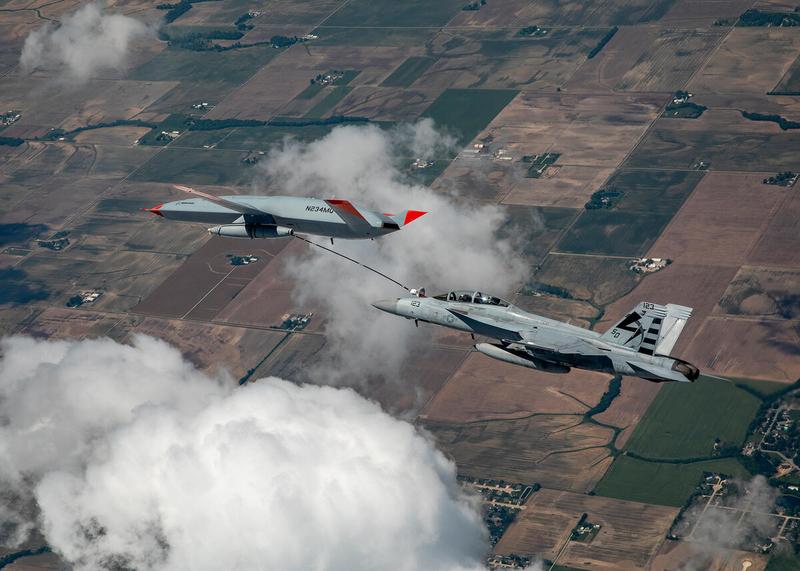
Lawmakers are asking the Navy to start adding capabilities to the emerging MQ-25A Stingray unmanned carrier tankers that are set to join the fleet in the next few years, service officials said.
While lawmakers have pushed the service to slow down their planned unmanned surface vessels with a series of land-based testing sites, the opposite is true for unmanned aviation, deputy chief of naval operations for warfighting requirements and capabilities Vice Adm. Jim Kilby (OPNAV N9) said on Tuesday at an event at the Navy Memorial.
“Congress is very skeptical about unmanned surface vessels: go-slow, land-based testing, don’t lose your lessons learned in the past,” Kilby said.
“But in the air, they’re probably more confident because of what we’ve done as a nation in the last 20 years. I get pressurized about, ‘When are you going to drop bombs from the MQ-25? When are you going to use it as a sensor?’”
Kilby said a major hurdle to expanding the roles and responsibilities for the MQ-25A would be to sort out how the aircraft – with a wingspan ten feet wider than a F/A-18E/F Super Hornet – would integrate aboard an aircraft carrier.
“There is a vexing part of the integration of an unmanned aircraft into the air wing. That’s a dance that requires a lot of people doing the right thing at the right time over and over and over again without communicating with each other because they just know their job and we’re introducing this big, unmanned thing into this dance. I got to have that down,” he said.
For Kilby, the benefit of unmanned systems is not only to save wear and tear on manned platforms like the Super Hornets, currently responsible for refueling the air wing, but also pushing beyond the limits of a human crew.
“We need to introduce increasing capability here, matched with complexity to make that air wing of the future more robust because I’m getting pushed in range. That human endurance piece is where I want to use all my real estate as judiciously as I can from the air wing perspective,” Kilby said.
“The next logical thing to me is a sensor. Then I’m getting to the crew endurance piece. I’m creating a system where I’m taking out all the payload required for people – ejection seat, human living space … and use it for payload, so I’ve increased the effectiveness of that platform – as long as I can control it.”
Service leaders have said they envision an air wing that could be more than half unmanned starting in the 2030s.
“We do have a sense of urgency but we’re also trying to be very deliberate because what we don’t want to do is make rash decisions on buying things in great numbers that aren’t necessarily going to serve us well, you know, a decade or more from now when we – when we have them in greater quantities,” Chief of Naval Operations Adm. Mike Gilday said in April.
The Pentagon in 2016 retooled a Navy program that would have created an unmanned carrier surveillance and light aircraft in favor of developing the MQ-25A unmanned tanker.
Earlier this month, Boeing and Naval Air Systems Command flew the first refueling test that married Boeing’s MQ-25A T1 prototype with a Super Hornet.
The Navy’s initial goal for the program was to deliver about 15,000 pounds of fuel at 500 nautical miles from the carrier, USNI News reported in 2017.
The additional reach would extend the range of the air wing beyond 700 nautical miles, USNI News understands.





